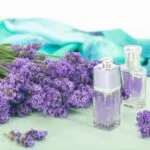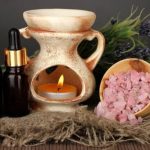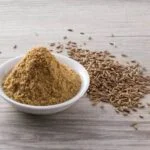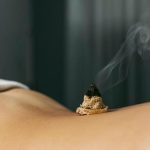100 Pure Aromatherapy Oils, also known as essential oils, are highly concentrated plant extracts that have been used for centuries for their various therapeutic properties. These oils are derived from different parts of plants such as flowers, leaves, stems, and roots, and are renowned for their natural healing abilities.
In this article, we will explore the history, benefits, uses, types, and tips for purchasing 100 pure aromatherapy oils to help you harness the power of these natural wonders in holistic wellness.
Aromatherapy is not a new concept but has been practiced for thousands of years. The use of aromatic plants and their extracts can be dated back to ancient civilizations in Egypt, China, India, Greece, and Rome. Throughout history, these potent oils have been employed for their medicinal and therapeutic benefits in treating various ailments and promoting overall well-being.
The benefits of 100 pure aromatherapy oils are vast and diverse. From promoting relaxation and reducing stress to supporting respiratory health and improving skin conditions, these essential oils offer a wide range of therapeutic effects. Furthermore, they can be used in massages, baths, inhalation therapy, skincare products, and even household cleaning products. With their versatility and effectiveness, it’s no wonder that aromatherapy has become increasingly popular in modern holistic wellness practices.
The History of Aromatherapy
Aromatherapy has a rich history that dates back thousands of years, with civilizations all over the world discovering and using the benefits of essential oils. The use of aromatic plant extracts for medicinal, spiritual, and cosmetic purposes can be traced back to ancient civilizations such as China, India, Egypt, and Greece.
The Egyptians were some of the first to use aromatic plants for their healing properties, utilizing essential oils in religious ceremonies, burial rituals, and medicine. They were known to use oils such as frankincense, myrrh, and cedarwood in embalming practices and for overall well-being.
In India, the practice of Ayurveda has been incorporating essential oils for over 3,000 years. The ancient texts of Ayurveda contain detailed information on various botanicals and their therapeutic uses. Similarly, in China, aromatic plants have been used in traditional Chinese medicine for centuries.
During the Middle Ages in Europe, the use of aromatics continued to develop and flourish. Essential oils were used to combat the spread of disease during the plague and became an integral part of herbal medicine practices.
Today’s modern use of aromatherapy has its roots in these ancient practices. While it has evolved into a more systematic approach with scientific research supporting its benefits, the fundamental principles remain unchanged. The history of aromatherapy is a testament to the enduring power and efficacy of 100 pure aromatherapy oils across diverse cultures throughout history.
- Ancient civilizations like Egypt utilized essential oils
- India’s Ayurvedic tradition incorporates essential oils
- Aromatics used during the Middle Ages in Europe
Benefits of 100 Pure Aromatherapy Oils
100 Pure Aromatherapy Oils offer a wide range of benefits that contribute to holistic wellness, including relaxation and skincare. These essential oils are highly concentrated and derived from natural plant extracts, making them potent and effective for various purposes. From promoting relaxation to improving skin health, these oils have been used for centuries for their therapeutic properties.
One of the most well-known benefits of 100 Pure Aromatherapy Oils is their ability to promote relaxation and reduce stress. Oils such as lavender, chamomile, and ylang-ylang are popular choices for creating a calming atmosphere and aiding in relaxation. When diffused or added to a bath, these oils can help alleviate anxiety, improve sleep quality, and create a serene environment.
In addition to promoting relaxation, 100 Pure Aromatherapy Oils also offer skincare benefits. Many essential oils have properties that can help improve the health and appearance of the skin. For example, tea tree oil is known for its antiseptic properties and can be used to treat acne and blemishes.
Meanwhile, rosehip oil is rich in antioxidants and fatty acids that can help hydrate the skin and reduce signs of aging. Whether used alone or as part of a skincare routine, these oils can contribute to healthy, radiant skin.
When using 100 Pure Aromatherapy Oils for skincare purposes, it’s important to properly dilute them with a carrier oil to avoid irritation or sensitization. Additionally, some essential oils may be photosensitive, meaning they can cause skin reactions when exposed to sunlight. It’s crucial to research each oil’s specific properties before incorporating them into your skincare routine.
How to Use 100 Pure Aromatherapy Oils
Diffusion
One of the most popular methods of using 100 pure aromatherapy oils is through diffusion. This involves dispersing the aroma of the essential oils throughout a space, such as a room or office. Diffusers come in various types, including ultrasonic, nebulizing, and heat diffusers. Simply add a few drops of your favorite essential oil to the diffuser and enjoy the therapeutic benefits as the aroma fills the air.
Topical Application
Another common way to use 100 pure aromatherapy oils is through topical application. When diluted with a carrier oil, such as coconut or jojoba oil, essential oils can be applied directly to the skin for massage or skincare purposes. It’s important to perform a patch test before applying any essential oil to a larger area of skin, as some individuals may have sensitivities or allergies.
Inhalation
Inhalation is another method of using 100 pure aromatherapy oils. This can be done by inhaling the aroma directly from the bottle, adding a few drops to a bowl of hot water and inhaling the steam, or even creating personal inhalers for on-the-go relief. Inhaling certain essential oils has been known to provide respiratory benefits and promote emotional wellbeing.
From diffusion to topical application and inhalation, there are many ways to incorporate 100 pure aromatherapy oils into your daily routine for their therapeutic properties. Whether you’re looking for relaxation, skincare benefits, or emotional support, these versatile oils can be used in various ways to enhance your overall well-being.
Popular Types of 100 Pure Aromatherapy Oils
Lavender Essential Oil
One of the most popular and versatile essential oils, lavender is known for its calming and relaxing properties. It is often used to promote restful sleep and alleviate stress and anxiety. In addition to its soothing effects on the mind, lavender oil also has skin-healing properties, making it a common ingredient in skincare products.
Peppermint Essential Oil
Peppermint oil is prized for its invigorating and energizing aroma. It is commonly used to alleviate headaches, improve focus, and relieve muscle pain. When used topically or in a diffuser, peppermint oil can provide a refreshing burst of mental clarity and alertness.
Eucalyptus Essential Oil
Eucalyptus oil is well-known for its respiratory benefits. When diffused, it can help clear congestion and ease breathing difficulties. Its antibacterial properties also make it an effective natural remedy for colds and respiratory infections. Additionally, eucalyptus oil is often used in massage blends to soothe sore muscles and joints.
Tea Tree Essential Oil
Tea tree oil possesses powerful antimicrobial properties, making it an essential part of any natural first-aid kit. It is commonly used to treat minor cuts, scrapes, and insect bites. Tea tree oil also offers skin-cleansing benefits and can be incorporated into skincare routines for those with acne-prone or oily skin.
As you explore the diverse range of 100 pure aromatherapy oils available, consider experimenting with different types to discover their unique benefits and applications in promoting overall wellness. Whether you are seeking relaxation, relief from physical discomfort, or support for emotional well-being, there is likely an essential oil that can cater to your specific needs.
How to Identify High-Quality 100 Pure Aromatherapy Oils
When it comes to purchasing 100 pure aromatherapy oils, it’s essential to ensure that you are getting a high-quality product. There are several key tips to keep in mind when selecting the best oils for your aromatherapy needs.
One of the most important factors to consider is the purity of the oil. Look for oils that are labeled as “100% pure” or “pure essential oil” to ensure that you are getting a product without any added fillers or synthetic ingredients.
Another important aspect to consider when purchasing high-quality 100 pure aromatherapy oils is the sourcing and production methods used by the company. Look for oils that have been responsibly sourced and produced using ethical and sustainable practices. Oils that have been extracted through methods such as steam distillation or cold pressing are often considered to be of higher quality.
In addition to purity and sourcing, it’s also important to consider the reputation of the brand from which you are purchasing your 100 pure aromatherapy oils. Look for companies that have a strong track record of producing high-quality, pure essential oils.
Reading customer reviews and seeking recommendations from trusted sources can also help guide you towards reputable brands. By carefully considering these factors, you can ensure that you are purchasing the best 100 pure aromatherapy oils for your needs.
Aromatherapy Blends
When creating aromatherapy blends, it’s important to consider the properties of each essential oil being used. For example, some oils are known for their calming effects, such as lavender and chamomile, while others like peppermint and lemon are popular choices for invigorating blends. By understanding the characteristics of each oil, one can better create synergistic blends that cater to specific wellness goals.
It’s also important to dilute essential oils properly when creating blends to ensure safety and effectiveness. Depending on the application method, whether it’s through diffusion or topical use, knowing the appropriate ratios for blending is crucial. Additionally, being mindful of potential skin sensitivities and allergies is essential when formulating aromatherapy blends.
| Essential Oil | Properties |
|---|---|
| Lavender | Calming, Sleep aid |
| Peppermint | Invigorating, Energy-boosting |
| Eucalyptus | Congestion relief, Respiratory support |
Conclusion
In conclusion, 100 Pure Aromatherapy Oils have a long and rich history, dating back centuries to ancient civilizations. From their beginnings in rituals and religious ceremonies to their modern-day uses for relaxation, skincare, and overall wellness, these oils have proven time and time again to be powerful tools for holistic health.
The benefits of 100 Pure Aromatherapy Oils are vast and diverse. Whether it’s the calming scent of lavender, the invigorating aroma of peppermint, or the respiratory benefits of eucalyptus, these oils offer natural solutions for a wide range of physical and emotional concerns. From stress relief to immune support to improved sleep quality, the potential applications of aromatherapy oils are endless.
When it comes to using 100 Pure Aromatherapy Oils, it’s important to approach them with knowledge and respect. Understanding proper usage methods such as diffusion, topical application, and inhalation is crucial for their effective and safe use.
Additionally, knowing how to identify high-quality oils can ensure that you are getting the most therapeutic benefits from your aromatherapy practice. With the right information and tools, anyone can harness the power of 100 Pure Aromatherapy Oils for a more balanced and holistic life.
Frequently Asked Questions
How Can You Tell if an Essential Oil Is 100% Pure?
You can tell if an essential oil is 100% pure by checking for third-party testing and certification. Look for brands that provide detailed information about the sourcing, extraction, and testing of their oils to ensure purity.
Which Essential Oils Are Really Pure?
Some essential oils that are known for their purity include lavender, tea tree, peppermint, eucalyptus, and lemon. These oils are commonly used in aromatherapy and have established reputations for being high-quality and pure.
Can an Essential Oil Be 100 Pure?
An essential oil can be 100% pure if it has undergone rigorous testing and meets the quality standards set by reputable organizations such as the National Association for Holistic Aromatherapy (NAHA) or the Alliance of International Aromatherapists (AIA). Look for oils with these certifications for confidence in purity.

Are you looking for a natural way to improve your health and wellbeing?
If so, aromatherapy may be the answer for you.





